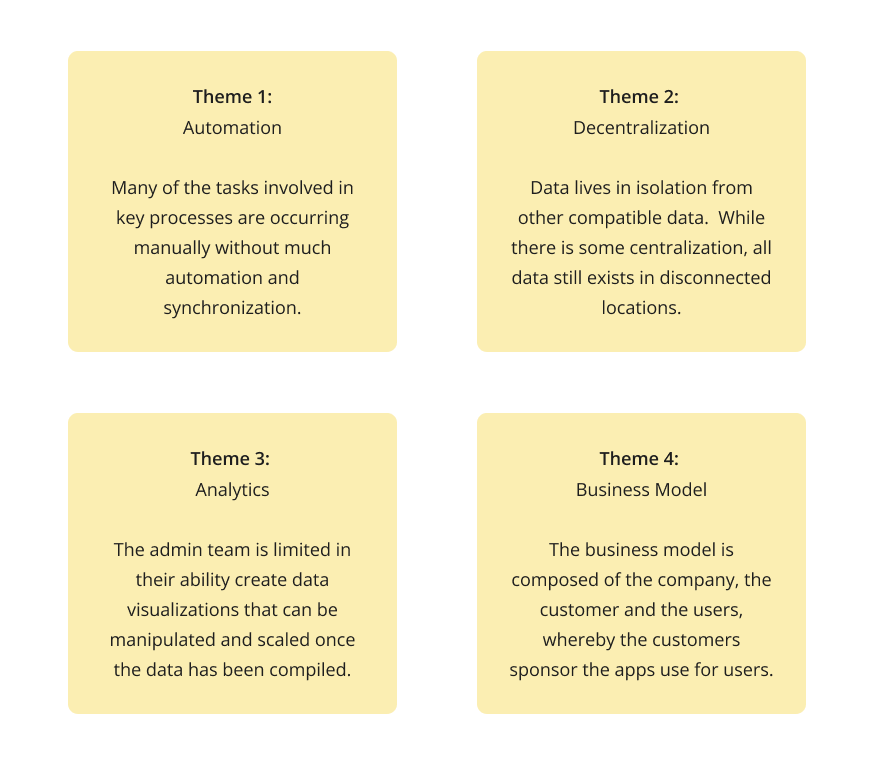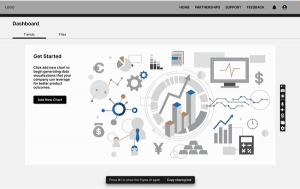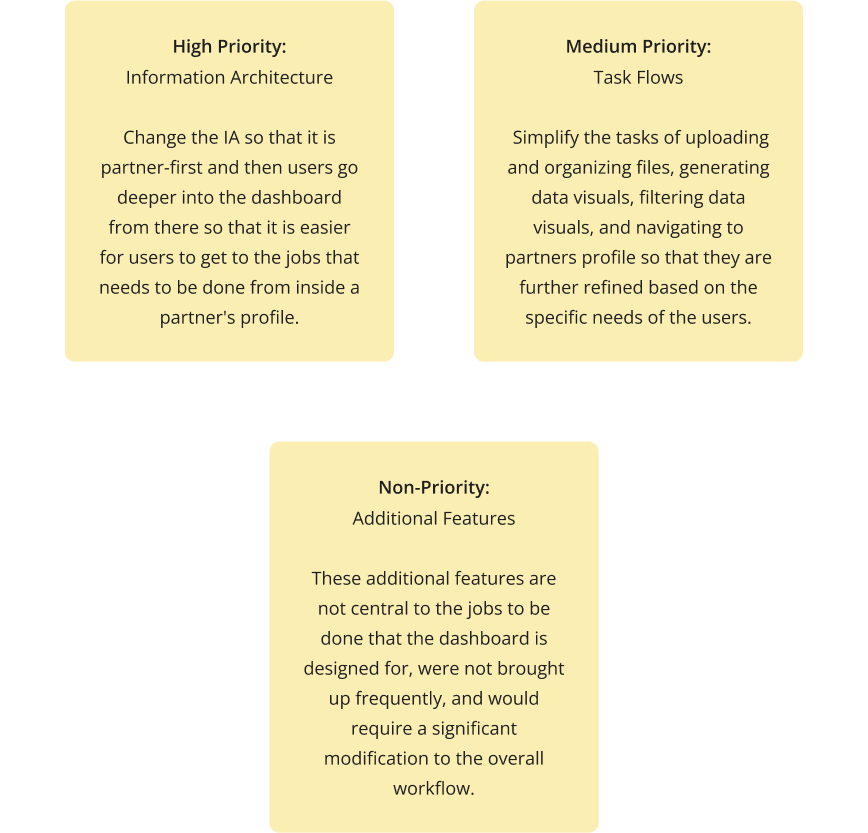Data Files Screen Design
I also incorporated a screen that would allow users to manage the files with the data. At this point, I thought that it made sense for these to exist near the screen on which users were creating data visualizations so I created a tab for each of these tasks. As I moved on to the mid-fidelity screen, I again created filters and pagination for users to be able to view relevant files when needed. I also clarified the information that users would need to see per file and the actions users could take on individual files. My competitive research did not really showcase screens that contained lists of files or what it would look like to upload files so I took to Dribbble for inspiration on how what to include and how to design the flow.
Partner Profile Design
For the partner profile page, I moved the partner details to the left in the mid-fidelity design. I Also clarified the different screens users could navigate to as notes, todo list, calendar and activity record, allowing users to publish updates like Facebook. I also incorporated a feed for users to view these updates chronologically and filters to be able to narrow them down when needed as well. My competitive research did not really examine SaaS companies like Github and Salesforce so I researched these for inspiration. I incorporated patterns like the user photo on the left, the tabs to organize the different feeds.
Component Design
For the design of the components, I applied best practices. I applied the styles from Rhymes with Reason’s branding guide later on after doing testing on the mid-fidelity wireframes. There weren’t a ton of rules in the branding guide so I iterated to make sure that the components were accessible while also maintaining the style of the company.
Usability Testing
I drafted a usability test plan and collaborated with the stakeholder to conducting testing with the key admin team members The subjects included the founder, the person in charge of evaluation and metrics, the operations manager, person in charge of customer success and one of the software engineers. Before finalizing the plan, I iterated on the questions to make sure they would actually generate usable feedback. The major priorities for testing were testing the four flows of uploading files, generating data visuals, filtering data visuals and navigating to a partners profile and understand users’ preference for different views of the files and different organizations of the site’s content.
Feedback Prioritization
Testing found no errors with the website in terms of flow all users were successfully able to complete the four tasks. Users did however have a lot of rich feedback about the information architecture, the individual task flows, preferences of specific views, the specific jobs to be done and additional features they would like to see.
Once I presented all the feedback to the stakeholder, we collaborated to organize the feedback into the most high priority items, the medium priority items and the non-priority items.
Priority Revisions
I focused the majority of my revisions on the high priority issue of revising information architecture. I moved the partner profiles list to the dashboard so that the actions of uploading files and adding data visualizations would happen on a partner’s page. This ended up simplifying some steps of the task flows since users no longer needed to link data visualizations or files to partners. I also added a section to this screen for aggregate analytics across partners as a tab.
This also meant that the partner profiles needed revisions as well. I changed the tabs to hold the screens for activities, analytics and documents. I also removed the text field and instead left the button which would trigger the text field when pressed. This way, I left more of the screen for the activities and created coherence between the activity screen, the analytics screen and the documents screen.


























